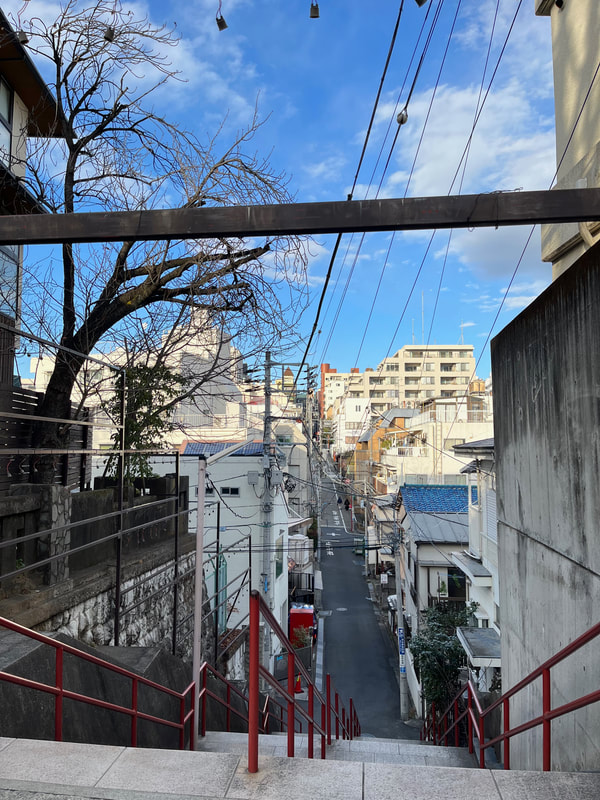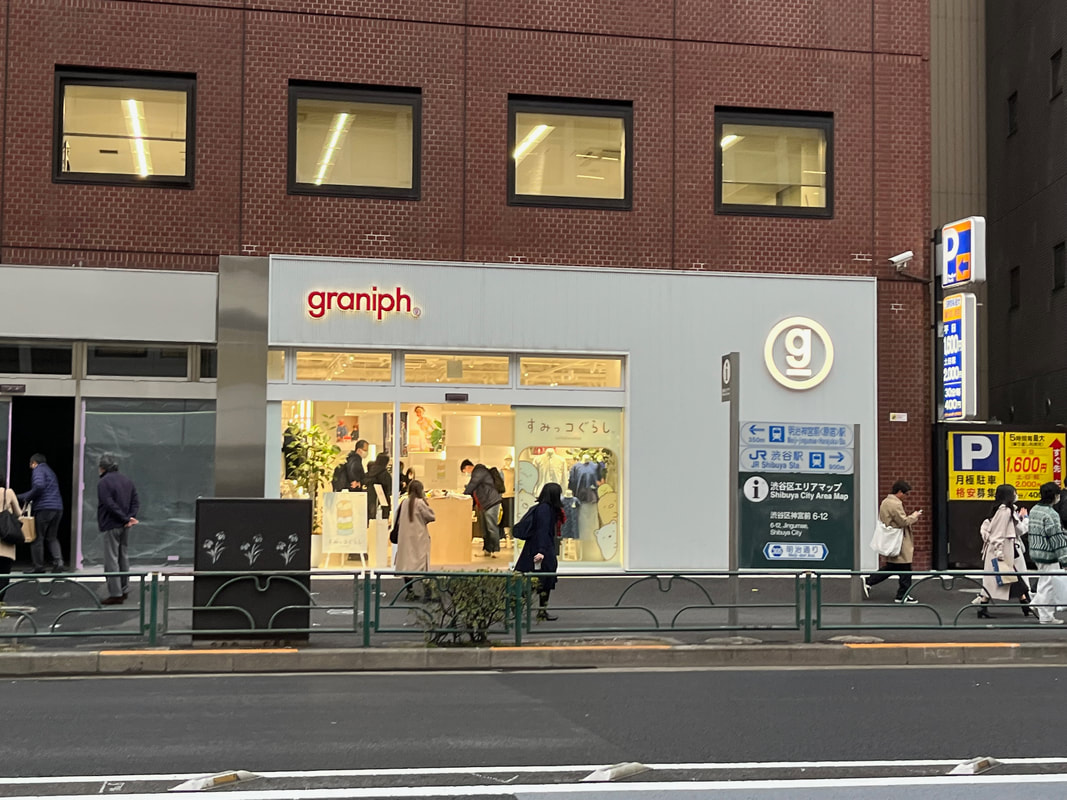|
The act of consumption has transformed from a biological need to a tool of self-expression, a means to manoeuvre through social hierarchies, and the pursuit of personal satisfaction. Likewise, consumer culture has become a necessary part of modern life, where the desire for material possessions is a natural human instinct driven by these needs (Twitchell, 1999). This blog post will explore and better understand the role of consumption in my life by evaluating my travelling and shopping habits and deriving the meanings behind these acts. Travel Travelling abroad is an activity that strongly resonates with me as it allows me to escape the mundaneness of everyday life and unlock new memories and experiences in foreign countries. Travel plays a large role in identity construction by allowing people to explore different aspects of their identities through engagement in unique environments and cultures; and consuming experiences, identities and cultural meanings (Gazley & Watling, 2015). The allure of visiting Japan has resonated strongly with me due to its culture and heritage offerings, having made seven trips to various parts of the country in the past decade. In February this year, I embarked on my first solo overseas to Japan, with the trip spanning three weeks with a focus on the Tohoku and Niigata region, to challenge myself by stepping out of my comfort zone. Many firsts were accomplished on this adventure. One was my first skiing experience in Yuzawa, Niigata, with the first day spent learning the basics of skiing; the other two days were spent stumbling and crashing into the powder snow and finally conquering the beginner slopes of the Japanese Alps. The decision to choose Yuzawa was due to the ease of access to the region, the large selection of beginner ski resorts, the availability of experienced ski instructors, as well as the wide array of affordable accommodations. My positive ski experience in Yuzawa has created an inner desire to return to the slopes to ski again. The complex interaction of ski tourism's personal, social, marketing and environmental factors contributed to this desire (Meethan et al., 2006). Another was the visit to Aomori city, where I was touched by the acts of generosity from my Airbnb homestay host, who went above and beyond to ensure that my stay was comfortable by providing information, warm accommodation in the freezing sub-zero temperatures, and offering me a lift to the bus station on a snowstorm on the wee hours in the morning so that I could catch the first bus out to visit the Sukayu Onsen deep in the mountains. By purchasing an Aomori souvenir as a reminder of this special moment, I have utilised the souvenir as a memory object to connect me with the Aomori Prefecture (Gavin-Schwartz, 2003). One other experience was the visit to Miyagi Prefecture, where the Nikka Whisky's Miyagikyo Distillery and the Matsushima Tourism Association Oyster Shack staff and patrons made me feel extremely welcome through the friendly banter, tasty whiskey and delicious fresh oysters. These social influences helped positively shape my travel experience and reinforced my desire to travel again (Gazley & Watling, 2015). In Tokyo, I had the opportunity to relive a moment in the famous Japanese animation movie Your Name when I visited the iconic red stairs at Yotsuya Suga Shrine, which was featured when the two main characters were finally able to meet each other in the movie's finale. By visiting a real-life location and immersing myself in the environment, I was able to transform a fictional story into a genuine experience (Lee, 2012) The pursuit of authentic experiences in the February Japan solo trip helped strengthen my self-identity through my exposure to new places, people and cultures, as well as contributing to my personal development by stepping into unfamiliar situations and being able to learn and adapt as required (Desforges, 2000). Shopping Retail therapy is a guilty pleasure of mine, where I indulge in making physical and digital purchases as a form of self-fulfilment. The factors that drive my purchasing habits include the desire to procure cool technology gadgets with beneficial qualities, the urge to wear aesthetically-pleasing clothes and shoes, the ease with which to purchase video games online, and when any of the previously mentioned products are sold for reduced prices. Technology has always excited me as it showcases humanity's drive to improve and progress continuously, where one can purchase the latest consumer technology to gain insight into its development. One such purchase I made that proved extremely practical will be AirPod Pro wireless earphones made by Apple, where the AirPod Pro's integrated active noise cancelling (ANC) technology reduces the volume of undesirable sound and create a more pleasurable listening experience. Additionally, the AirPods Pro has an attractive form that is instantly recognisable. The annoyance of dealing with earphone cables, the increasing noise pollution in our society, and the stylish design were the main drivers in my rational purchasing decisions (Gabriel & Lang, 2006). The purchase of the AirPods Pro also showcases my values to others, where my appreciation for the technological and fashionable aspects of the product is displayed when worn (Slater, 1999). My curiosity in fashion began when I was exposed to the Graniph brand from Japan, where the shirts featured designs made in collaboration with major artists. The comfortable fabric and the cool designs of the Graniph shirts got me interested in learning how to mix and match my clothes together based on their colours to create the best look. Similarly, my obsession with New Balance shoes stemmed from the same reasons. Retail brands helped stimulate this interest through visual merchandising strategies by making their products look attractive in their brick-and-mortar stores and e-Commerce platforms, reinforcing consumption as a spatial practice (Clarke et al., 2003). The ability to select and purchase products from the Graniph online store, have it shipped from Japan and receive them in Singapore within a week is in no part due to globalisation transforming the way consumer culture operates (Clarke et al., 2003). Playing video games has always been a staple in my recreational time. The fictional worlds, charming characters, intricate plots and entertaining gameplay are the main reasons I enjoy playing video games. Valve's Steam videogame platform is the preferred choice to purchase, manage and play these video games. Due to the high cost of purchasing video games, I typically wait for seasonal sales that feature huge discounts on the Steam platform by subscribing to the platform's email marketing service to get notified of the occurrence of such sales. Valve uses this email service to deliver advertisements for the latest and greatest video games to my email address, creating an insatiable desire and resulting in my purchase of these products on the spur of the moment to satisfy my curiosity and desires, successfully creating the conditions necessary for affluenza to prosper (Hamilton & Denniss, 2005). Additionally, I have succumbed to the effects of affluenza when I participate in the growing video game monetisation methods, such as using the microtransaction functions of the video game to purchase in-game cosmetics to enhance my characters' aesthetics, and loot boxes to gain advantages over other players (Zendle et al., 2020). The value proposition of products has been a major consideration point for me when making purchases, with sales and promotions being the incentives in solidifying my decision. The unfortunate result is purchases that happen on the spur of the moment due to the implied savings, especially when the purchases are unplanned. One example is my recent purchase of a pair of trendy New Balance sneakers on the online store, as it had a price cut of more than 50 per cent, despite not requiring a new pair of shoes. This impulsive behaviour led to the unnecessary consumption of these products and reduced my financial health, allowing affluenza to foment due to my need for more material possessions (Hamilton & Denniss, 2005).
Conclusion Through the application of consumption theories to my travel and shopping lifestyle, there were two diverging viewpoints. Travelling is a form of positive consumerism as it allows me to engage with local communities in foreign countries, seek authentic experiences, and allow for self-development. However, shopping has been a form of negative consumerism for me due to the needless overconsumption that resulted from affluenza, with the environmental costs being the depletion of resources, unnecessary waste being generated and resulting increased pollution (Hamilton & Denniss, 2005) By understanding consumer culture's effects, I can better discern its positive and negative influences on me and make well-informed purchasing decisions to benefit myself and reduce the impact of overconsumption on the environment. References Clarke, D. B., Doel, M. A., & Housiaux, K. M. L. (2003). The Consumption Reader. Psychology Press. Desforges, L. (2000). Traveling the world. Annals of Tourism Research, 27(4), 926–945. https://doi.org/10.1016/s0160-7383(99)00125-5 Gabriel, Y., & Lang, T. (2006). The Unmanageable Consumer. In Introduction: The Faces of the Consumer (pp. 1–6). SAGE Publishing. https://doi.org/10.4135/9781446213049.n1 Gavin-Schwartz, A. (2003). Mementoes of the Past: Material Culture of Tourism at Stonehenge and Avebury [Book]. In Marketing Heritage: Archaeology and the Consumption of the Past (pp. 93–102). Alta Mira Press. Gazley, A., & Watling, L. (2015). Me, My Tourist-Self, and I: The Symbolic Consumption of Travel. Journal of Travel & Tourism Marketing, 32(6), 639–655. https://doi.org/10.1080/10548408.2014.954690 Hamilton, C., & Denniss, R. (2005). Affluenza: When too much is never enough. Allen & Unwin. Lee, C. (2012). “Have Magic, Will Travel”: Tourism and Harry Potter’s United (Magical) Kingdom. Tourist Studies, 12(1), 52–69. https://doi.org/10.1177/1468797612438438 Meethan, K., Anderson, A., & Miles, S. (2006). Tourism, Consumption and Representation: Narratives of Place and Self. CABI. Slater, D. (1999). Consumer Culture and Modernity. Polity. Twitchell, J. B. (1999). Lead Us Into Temptation: The Triumph of American Materialism. Columbia University Press. Zendle, D., Meyer, R. S., & Ballou, N. (2020). The changing face of desktop video game monetisation: An exploration of exposure to loot boxes, pay to win, and cosmetic microtransactions in the most-played Steam games of 2010-2019. PLOS ONE, 15(5), e0232780. https://doi.org/10.1371/journal.pone.0232780
0 Comments
|
Archives
May 2023
Categories |




